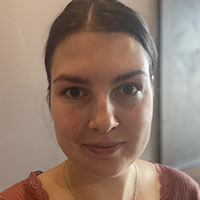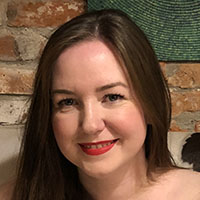Hello again, friends, and greetings from Ecuador! As we slowly shook off the last remnants of Covid, namely a little fatigue and brain fog, Carnaval came and went in Encase. Just like Mardi Gras in New Orleans and the world-famous Carnaval in Rio de Janeiro, Carnaval is a few days of fun and celebration before the Catholic season of Lent, a time of prayer and repentance which starts on Ash Wednesday. So, if you've ever over-indulged in your favorite junk food the night before beginning a diet, you understand Carnaval. Party tonight, for tomorrow you must atone!
However, Carnaval here in Cuenca is different from Rio's legendary bacchanal. The parade we attended on Saturday afternoon was family-oriented, with costumed couples twirling to blaring folk music and beautiful girls waving from floats and vehicles. Families and groups of teenagers carry water balloons and cans of scented spray foam for impromptu water fights. Occasionally a gleeful kid on a balcony squirts pedestrians with a water gun or a mischievous passenger sprays canned foam from the window of a passing car. Generally, though, the streets of Cuenca were quieter than usual during Carnaval, as many Cuencanos celebrate at home by hosting parties and dinners with family and friends.
Now that we've been out and about for a few weeks, we concur with Cuenca's reputation as a city with much to offer visitors. Ecuador is particularly accessible to Americans because its currency is the US dollar. Ecuadorian banks routinely buy paper dollars and coins from the US Treasury. The Ecuadorian sucre, which collapsed in 2000, is no longer minted. In the US, dollar coins never caught on and remain just a curiosity, but in Ecuador, Sacajawea and John Adams dollar coins are more common than paper dollars. Every Ecuadorian uses them daily, along with Thomas Jefferson nickels, Woodrow Wilson dimes, and the smaller denomination coins that Ecuador still mints, such as the big 50 centavos coin imprinted with the face of former Ecuadorian president Eloy Alfaro.
Downtown Cuenca gained UNESCO World Heritage status because of the many beautiful historic buildings dating from the 18th century and the city's historic prominence stretching back centuries. Beginning around the 6th century, the Cañari people took advantage of the area's stable, temperate climate and rich soil to create an agriculturally-based settlement they named Guapondeleg, meaning "land as big as heaven." After many centuries, the established Cañari civilization was invaded and conquered by the Incans, who absorbed some of their cultural elements and renamed the settlement Tomebamba, or "Knife Field."
Tomebamba became the northern Incan capital to match the southern capital of Cusco, Peru. Archeologists have identified 450 stone building blocks in Ecuador, weighing up to 1,500 pounds (700 kilograms) each, which the Incans brought over the Andes mountains from quarries around Cusco, a journey of nearly 1,000 miles. Having neither draft animals nor wheels to move the massive stones, the Incans conscripted the conquered Cañaris and other indigenous peoples to carry the blocks, a symbolic gesture denoting Incan strength and power.
We saw visual evidence of the assimilation of the Cañaris into the Incan culture when we visited Ingapirca in the nearby Cañar province. The small restored ruins are only a tiny part of the grand Incan settlement which once flourished there. Llamas graze on terraces where stone buildings once stored gold and treasures of powerful Incan kings. Our guide, Orlando, told us that the round Temple of the Sun at the crest of the grassy site had been carefully situated to catch the sun's rays in a small inner chamber during the summer solstice. Scholars believe that the temple's unique elliptical shape results from the gradual incorporation of the Cañaris, who favored natural, curved forms, into the Incan culture, whose architecture is typically formed from straight lines and rectangular shapes.
The morning of our visit was sunny and beautiful, with a blue sky arcing across the distant green mountain ranges encircling the ruined temple. As we enjoyed lunch at a charming historic hacienda hidden among the hills, the sky turned grey, and clouds hid Ingapirca from our view. After delicious lamb stew and mountain trout accompanied by produce from the hacienda's gardens, the clouds cleared, and the sun lit up Ingapirca again. But as we drove back into Cuenca an hour later, the sky was pouring rain, rivers of muddy water churned across the roads, and the sidewalks were generously outlined with tiny hail pellets.
Our morning at Ingapirca, the quiet ruin surrounded by the natural beauty of the mountains, reminded me strongly of Termessos, a nearly-forgotten ruined city we hiked to in Turkey last year. Termessos is one of the few cities Alexander the Great couldn't conquer due to its strategic defensive position in the Taurus mountains. Its extensive ruins include a necropolis, a street of carved sepulchers and tombs, a marketplace, a crumbled gymnasium for training athletes and scholars, and an immense open-air amphitheater on top of the mountain. Because Termessos is challenging to reach except by hiking uphill, there are few visitors. When we were there, the sky was so clear that we could see the city of Antalya 25 miles away and the faint blue rim of the Mediterranean beyond. Many centuries ago, the Solymi people of Termessos stood where we stood, looking over the plains of Pamphylia to see the edge of the Mediterranean in the distance.
After our visit to Termessos, I lived in a fog of mysterious delight for weeks, wondering about the people who lived in that mountain pass. Motivated by ideals and passions we can only guess at, they built a city, raised families, loved and warred, and eventually abandoned the city after an earthquake. Both Termessos and Ingapirca remind me that our lives, so crucial and absorbing now, are also brief. Soon enough, our emotions which rage so much today will be forgotten.
Back in Cuenca, my feet are planted more firmly in the modern present, and we can enjoy the sights and sounds, temporary though they may be. The triple blue-domed Catedral Metropolitana de la Inmaculada Concepción, also called the New Cathedral, is a lovely 20th-century alabaster and pink marble monument. Across the street is the small but bustling outdoor Flower Market, where $6 will buy two dozen long-stemmed roses, fresh and dewy from the thriving Ecuadorian flower industry. Parque Calderon, the historic city center across from the New Cathedral, is a green and lovely square with palm trees and a tall center fountain, popular with locals and visitors alike.
For instant refreshment, the four rivers which bisect the city always beckon. These "rivers" are actually broad mountain streams, no more than two or three feet deep, which rush and gurgle busily over rocks. Typically lower than the streets and traffic around them, the rivers are banked by steep green swaths of grass and trees that invite you to pause and relax. Whatever our destination, if we can walk along the Tomebamba or Yanuncay rivers, we always do, even if we have to go a bit out of our way.
The best views of the city are free at Mirador de Turi, a high point at the city's southern edge. Cuenca stretches in a panoramic view below, nestled in a green bowl of mountains. The adventurous can hike up to Turi, but taxis are plentiful and inexpensive in Cuenca, and a good choice since the city's elevation can leave visitors as breathless as the views.
We have a few more weeks to enjoy this temperate and historic city. I want to take a food tour, though I won't promise to try cuy, the traditional Ecuadorian dish of guinea pig. (Many say cuy is greasy and bony, but I've also heard it can be delicious if turned on an open spit.) I also want to visit Pumapungo Museum at least once. A few blocks from our Airbnb apartment, Pumapungo is a world-class art and ethnographic museum with Incan ruins and a bird sanctuary on the museum grounds.
And I'm still debating whether to invest in a Panama hat. Despite their name, Panama hats originated in Ecuador and are a prized national handcraft dating back to the 17th century. Woven of toquilla palm leaves, the highest quality hats take months to weave and shape by hand. The result is a lightweight, tightly-woven, breathable hat perfect for shielding the wearer from the powerful equatorial sun. Unfortunately, my budget doesn't stretch to the best-quality toquilla hats, which can cost thousands of dollars. Still, a nice Ecuadorian hat can be had for less than $100, and a quaint hat store downtown, a veritable Old Curiosity Shop of Panama hats, beckons me each time we pass by. Our lives are brief, after all, so I should enjoy a hat while my head is above ground, don't you think?
Until next time, best wishes, and travel lightly in your world!
 Julie
Julie


















